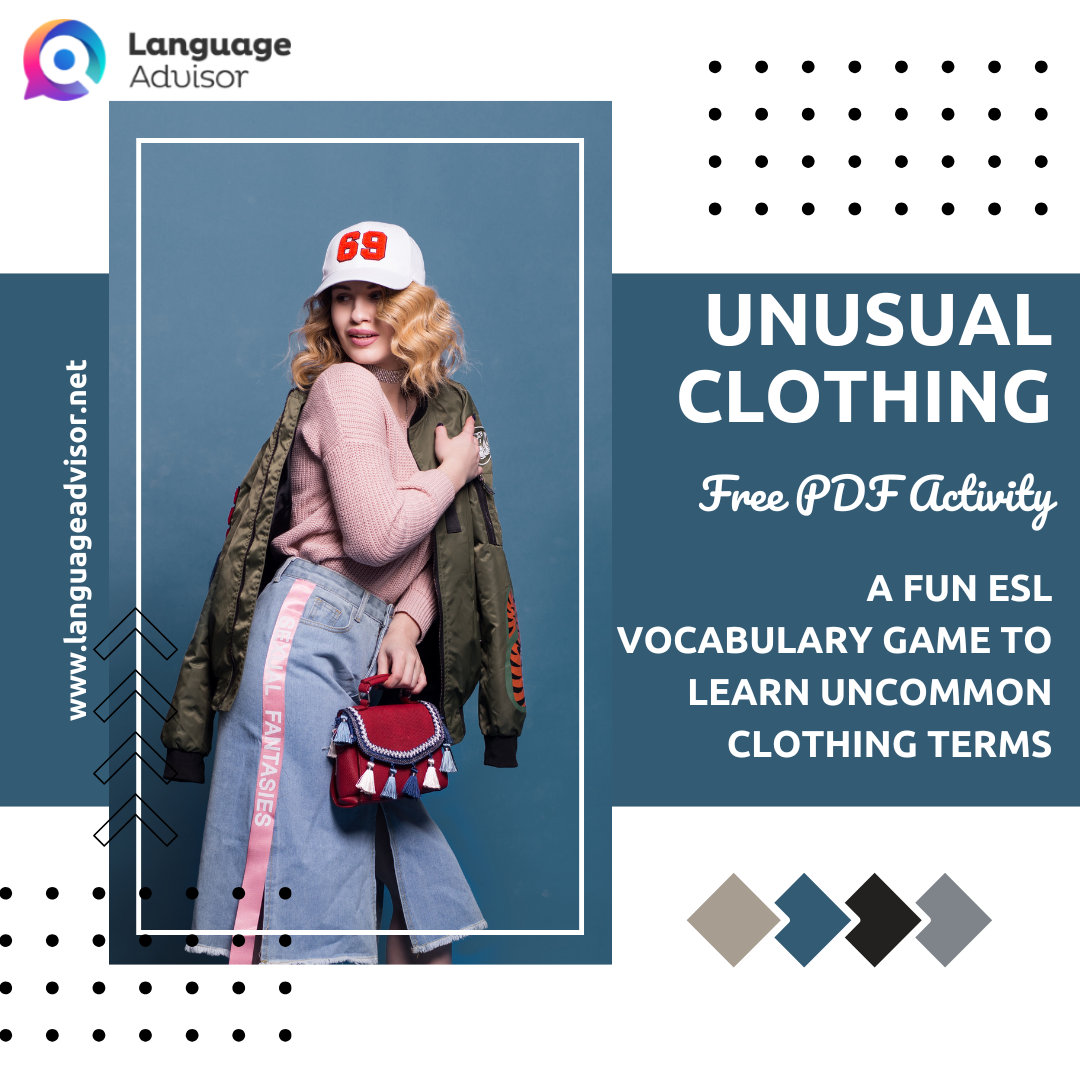Unusual Clothing. A Fun ESL Vocabulary Game to Learn Uncommon Clothing Terms – Free PDF Activity
Unusual Clothing

Unusual Clothing
Introduction
Looking to add a creative twist to your ESL clothing unit? The Unusual Clothing activity introduces students to a wide range of unique clothing terms while reinforcing spatial vocabulary like “above” and “below the belt.” Perfect for intermediate learners, this group-based ESL worksheet encourages discussion, teamwork, and deeper vocabulary engagement.
Whether you’re looking to stretch your students’ lexicon or simply spice up your lesson with something unexpected, this clothing classification game will challenge their thinking and sharpen their English skills.
Unusual Clothing – ESL Group Vocabulary Activity
Materials Needed:
- One copy of the Unusual Clothing worksheet per group of three students
Procedure:
- Divide the class into groups of three.
- Hand out the worksheet and explain that all 20 items listed are unusual articles of clothing.
- Students must decide whether each item is typically worn above or below the belt (waist).
- Set a 5-minute time limit to keep the energy high and encourage quick thinking.
- When time is up, swap worksheets with another group and go over the answers together as a class.
- The team with the most correct answers wins!
Answer Key
Worn Above the Belt:
- blouse
- brooch
- collar
- cravat
- cufflinks
- hoody
- mittens
- poncho
- shawl
- tiara
- waistcoat
Worn Below the Belt:
- clogs
- flip-flops
- kilt
- leggings
- slippers
- sarong
- tights
- trainers
- trunks
Why This Activity Works
This ESL clothing worksheet does more than build vocabulary. It promotes logical thinking (above/below classification), encourages collaborative discussion, and introduces students to fashion and cultural garments they may not know. Use it as a mid-lesson energizer or a lead-in to a larger conversation about cultural clothing around the world.
Conclusion
The Unusual Clothing activity is a lively, group-based way to expose students to less common vocabulary while reinforcing essential spatial prepositions and category thinking. It’s an ideal addition to any ESL teacher’s toolkit, especially when aiming to expand vocabulary and encourage student interaction in a meaningful context.ndational vocabulary.

